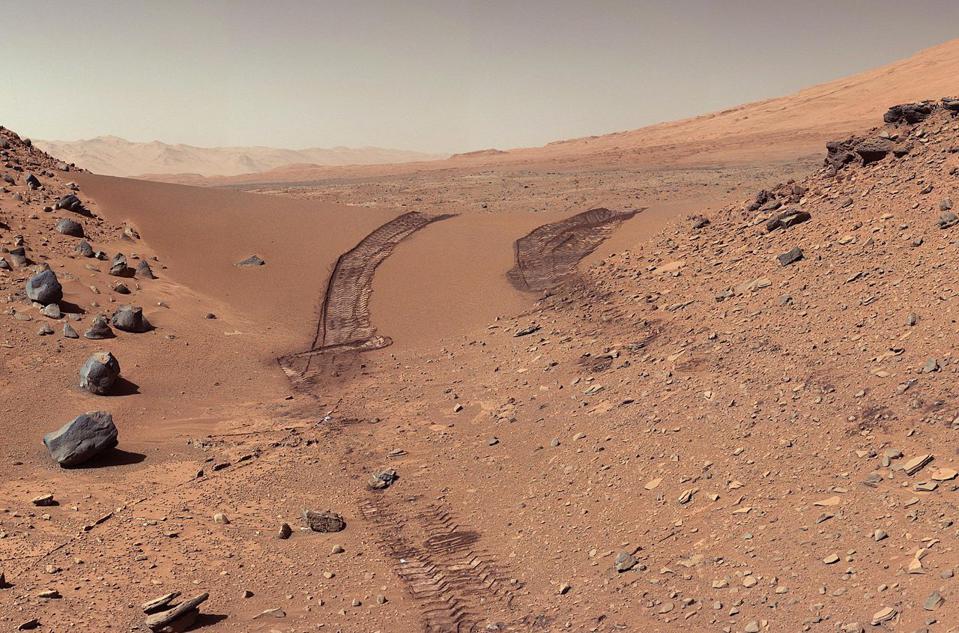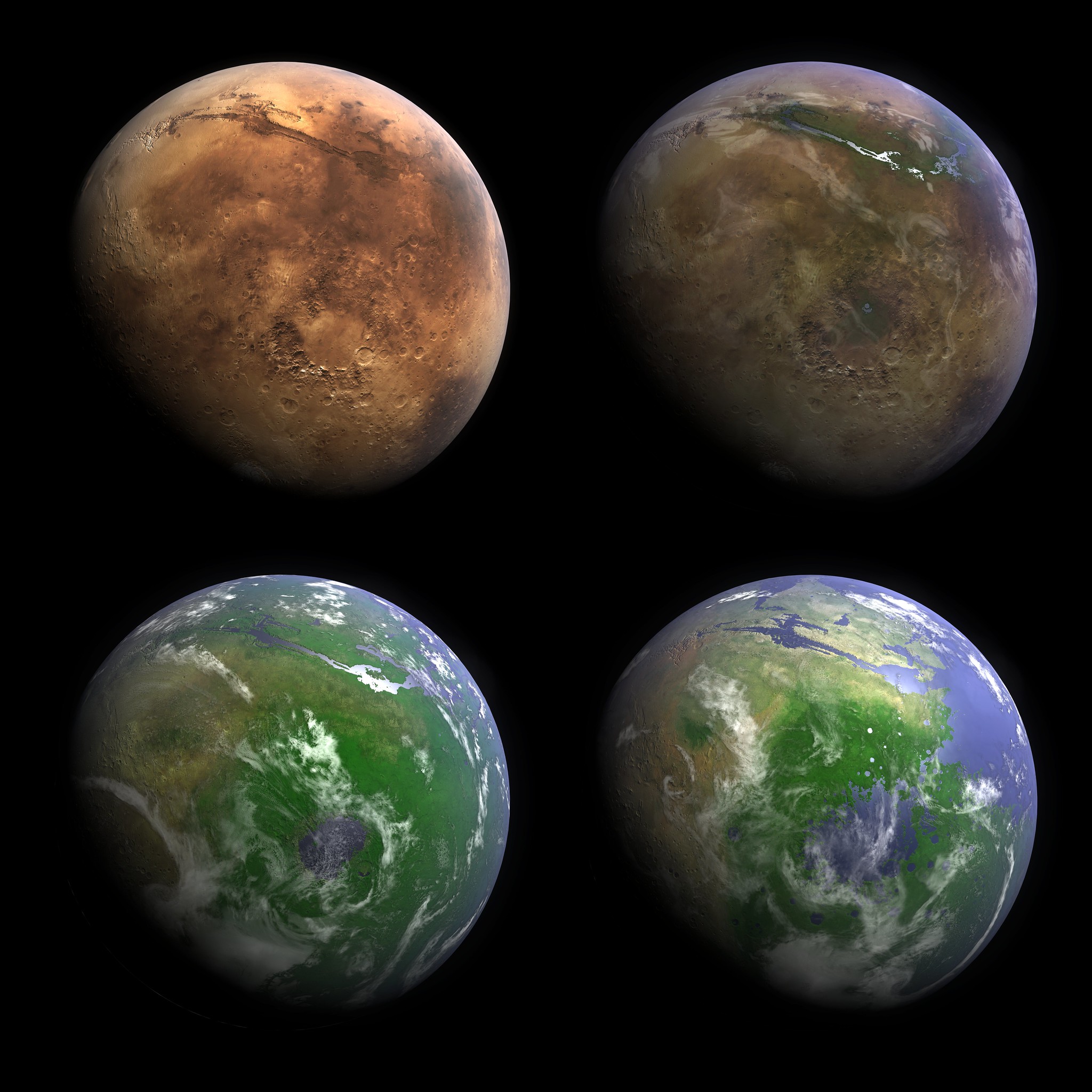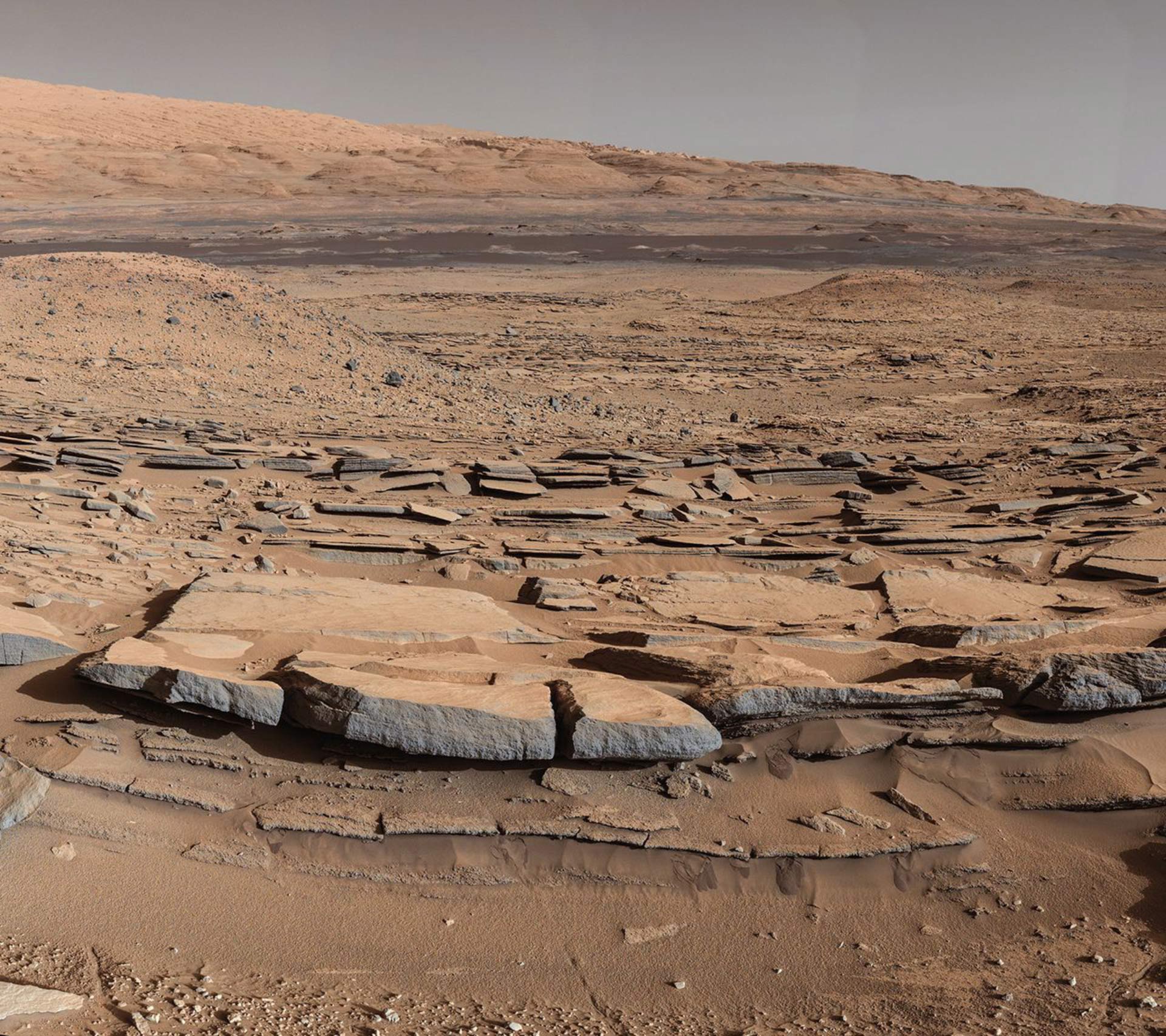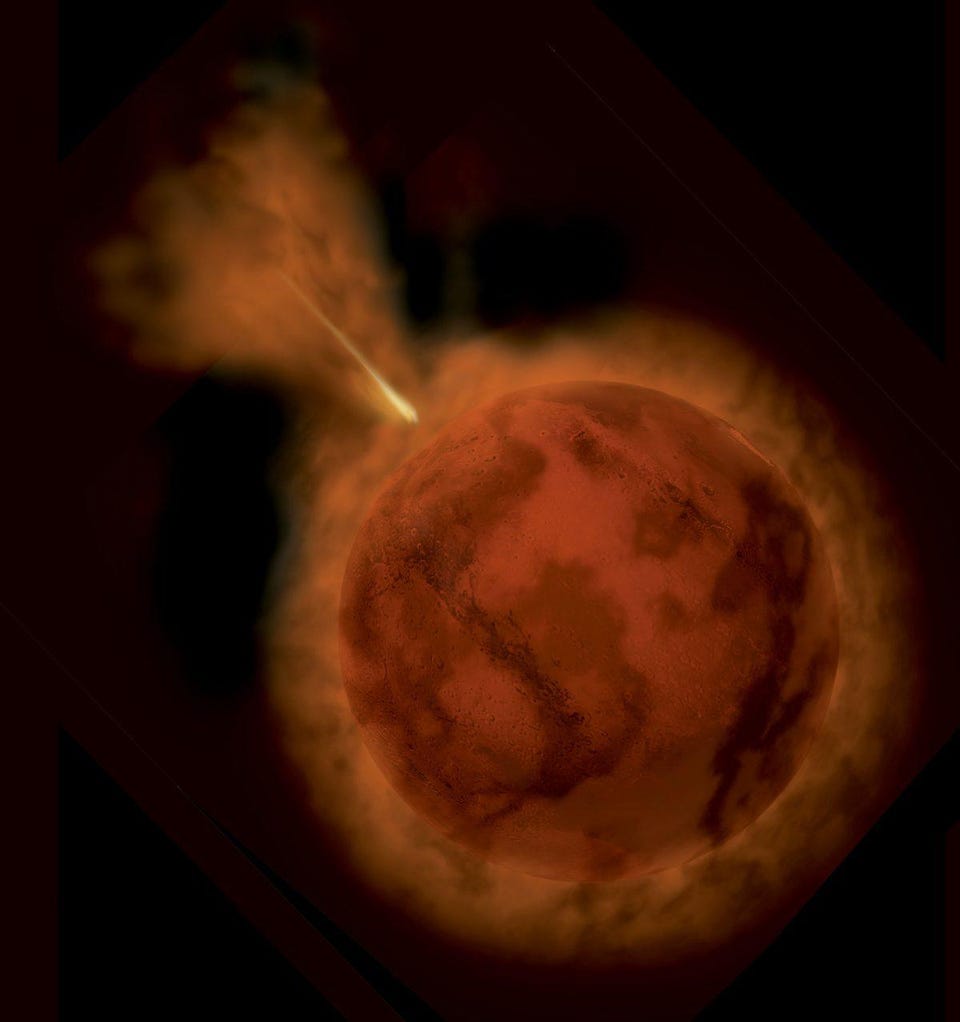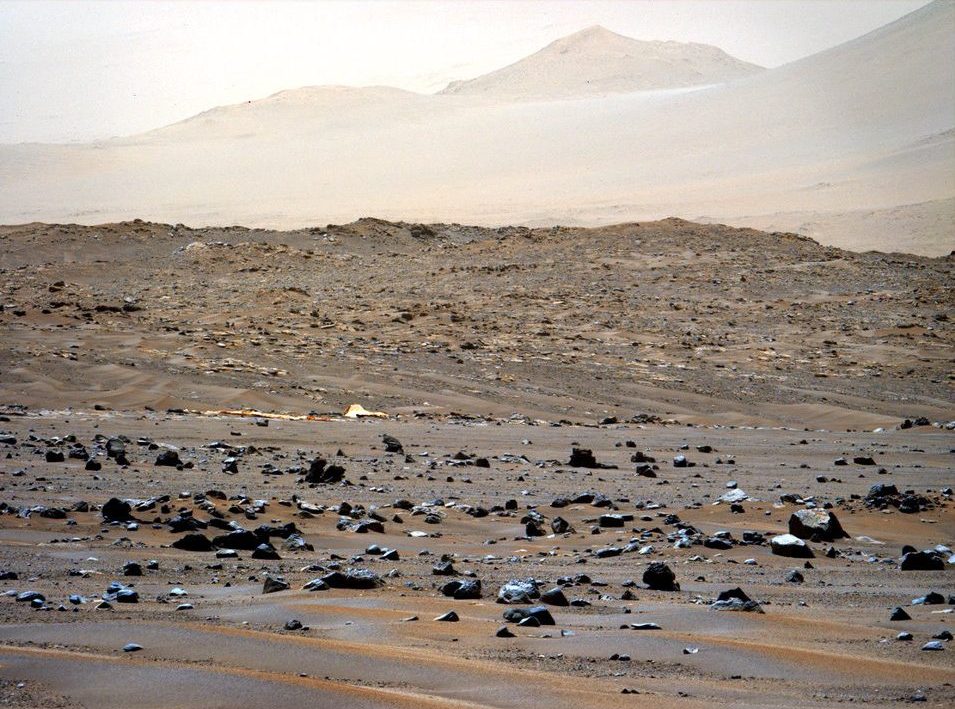Ancient killer asteroid created a megatsunami on Mars
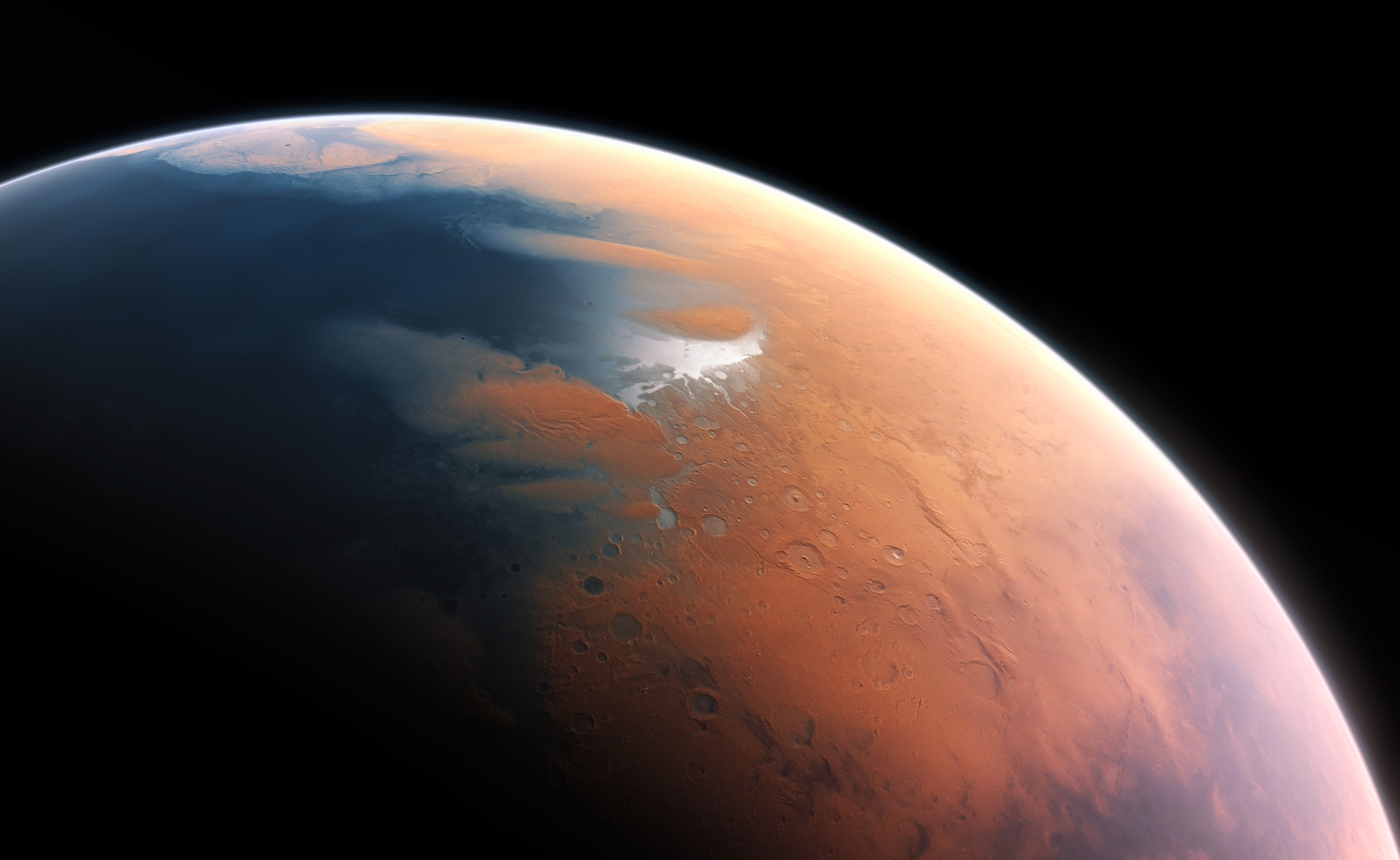
- Although Mars is cold, small, and lifeless today, it was once very Earth-like, with continents, oceans, and perhaps even early forms of life.
- However, the Martian past was very violent, with impacts and space weather creating a heavily cratered surface that persists to the present day.
- New evidence suggests that 3.4 billion years ago, an asteroid impact created a ~110-km wide crater and a megatsunami that extended for ~1500 kilometers. Here’s the fascinating story.
Within the Solar System, Mars and Earth are two sibling planets with similar early histories, but very different recent ones. In the early stages of the Solar System, both worlds:
- survived giant, early impacts,
- gained moons that persist until the present day,
- possessed temperate surface conditions and substantial-but-thin atmospheres,
- had copious amounts of liquid water on their surfaces,
- and the right overall conditions — as far as we know them — for life to arise for over 1 billion years.
However, from an evolutionary perspective, these two worlds then rapidly diverged. Here on Earth, life went on to transform our biosphere and persisted and thrived ever since, while on Mars, the red planet lost its core dynamo, then its magnetic field, and then its atmosphere and liquid oceans.
But before that, some 3.4 billion years ago, a killer asteroid landed in the Martian oceans, creating a 110 kilometer-wide crater and a megatsunami more than a quarter-mile (~450 m) high, sending boulder and other impact debris more than 1500 kilometers away from the collision site. At last, theory and observation have come together to complete the story, shedding a new light on a Martian catastrophe that occurred billions of years ago, back when liquid water oceans covered the red planet.

Some four-and-a-half billion years ago, the planets in our Solar System began to take shape. A central protostar would grow into our Sun, while the surrounding protoplanetary disk would fragment and form our planets, their moons, and the asteroid and Kuiper belts. The giant planets formed first, likely migrating inward-and-outward, and potentially ejecting a fifth, early member of our Solar System. The remnant matter formed multiple inner, rocky, terrestrial worlds early on, including Mercury, Venus, and two worlds — proto-Earth and proto-Mars — that would soon undergo massive impacts.
While the impact of the hypothetical world Theia with Earth would lead to the formation of our massive Moon, an impact on early Mars actually created a system of three moons: outermost Deimos, intermediate Phobos, and an innermost, larger moon that did not survive. That closest moon eventually fell back onto Mars, explaining why the modern Martian system only has two small moons; the third larger one, an analogue of Pluto’s giant moon Charon, fell back onto Mars long ago, likely after being gravitationally broken up into a ring of debris.

As that large amount of mass fell back onto Mars, it created a tremendous difference between the two hemispheres of Mars. On one hemisphere of Mars, there are tremendous highlands, where craters and rugged terrain are the hallmark of this portion. These highlands were likely continents back during the time when Mars had oceans, and represent the hemisphere where some debris may have fallen back onto it in this early stage, but not where the majority of the mass fell.
Instead, the hemisphere rich in lowlands — many kilometers lower in elevation than the highland-rich hemisphere — likely represents the location where the innermost moon (or the majority of its mass) impacted the young red planet, creating this enormous difference between the hemispheres. As water then accumulated in the aftermath of this topography-creating event, it filled the lowland areas, creating a vast Martian ocean. Meanwhile, although the highlands likely experienced lakes, rivers, and rainfall, it’s the lowlands where the great Martian oceans persisted.

The evidence for a watery past on Mars — once hotly disputed — is now overwhelming, with sedimentary rock, dried-up riverbeds with oxbow bends in them, and even salt-rich deposits and hematite spheres found in many locations on the surface. The evidence for these ancient oceans, however, wasn’t known at the time we first landed on the Martian surface. Nonetheless, what we found on the surface during that first mission, Viking 1, came as a tremendous surprise to those scientists who specialized in the study of Mars.
It had been known, even before Viking 1 landed, that the landing site it was headed to was going to be close to the end of a very large flood channel: Maja Valles. Scientists expected to find a geological record of an ancient megaflood, with the sorts of deposits we find on Earth wherever floods occurred in the past. Things like boulders embedded in deposited sediment and streamlined islands were the anticipated features.
But that wasn’t what was present at all. Instead, there was a large abundance of boulders strewn all about, atop a plains-like structure. This doesn’t add up, but whenever there are features present that you can’t explain, that’s a strong hint that you’ve got a scientific mystery just waiting to be solved on your hands.

One plausible, albeit highly speculative, explanation could be that there really was an ancient megaflood, but that something else happened after-the-fact to either wash away or otherwise cover that evidence. With large boulders not embedded within the top layer of the Martian soil, but rather atop it, it’s been suggested that some sort of thick crater ejecta covered over what was once terrain that was covered in megaflood deposits. However, the nearby craters that we’ve surveyed were insufficient to be consistent with that hypothesis. For decades, this remained mysterious.
It’s now been more than 45 years since the Viking 1 landing took place, and in a fascinating new paper out in Nature Scientific Reports, the authors claim to have found a potential solution. Perhaps the Viking 1 lander site was located at or near the edge of the ocean/continental borders late in the game: when Mars still possessed oceans on its surface, but after this megaflood, caused by Maja Valles emptying, occurred. If a large-enough impact hit the Martian ocean — similar to the famed impactor that hit Earth some 65 million years ago — a combination of crater ejecta and an associated megatsunami could be a potential solution.
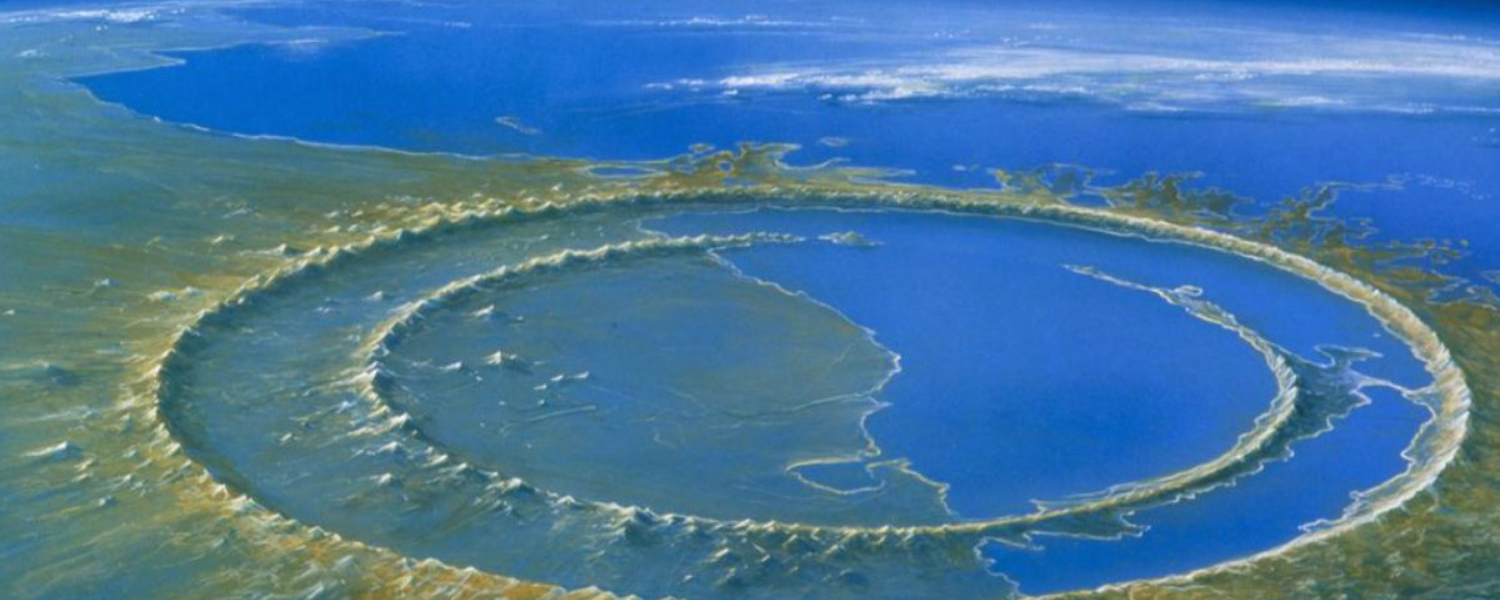
The thing that had been missing, up until now, was the identification of the crater that could have been responsible for that. Just as the discovery of Chicxulub crater on Earth, along with the layer of iridium-enriched ash found at the K-Pg boundary, validated and confirmed the picture that an asteroid triggered our planet’s 5th great mass extinction since the dawn of the Cambrian explosion, the discovery of crater Pohl, highlighted in the image above, might just be the piece of evidence that tips the scales in favor of a long-ago giant impact on Mars.
The crater Pohl is remarkable in a number of ways. It is:
- 110 kilometers in diameter, making it a large impact crater,
- located within the northern lowlands in an area suspected to be covered in ocean before Mars dried up,
- in a region suspected to be in the ocean shallows, roughly 120 meters below sea level at the time,
- and appears to be located about 900 kilometers from the Viking lander site.
The next step in validating this picture — which the authors also undertook — was to perform simulations that modeled asteroid and comet collisions on an early, wet Mars, and to see what sort of phenomena ensued.
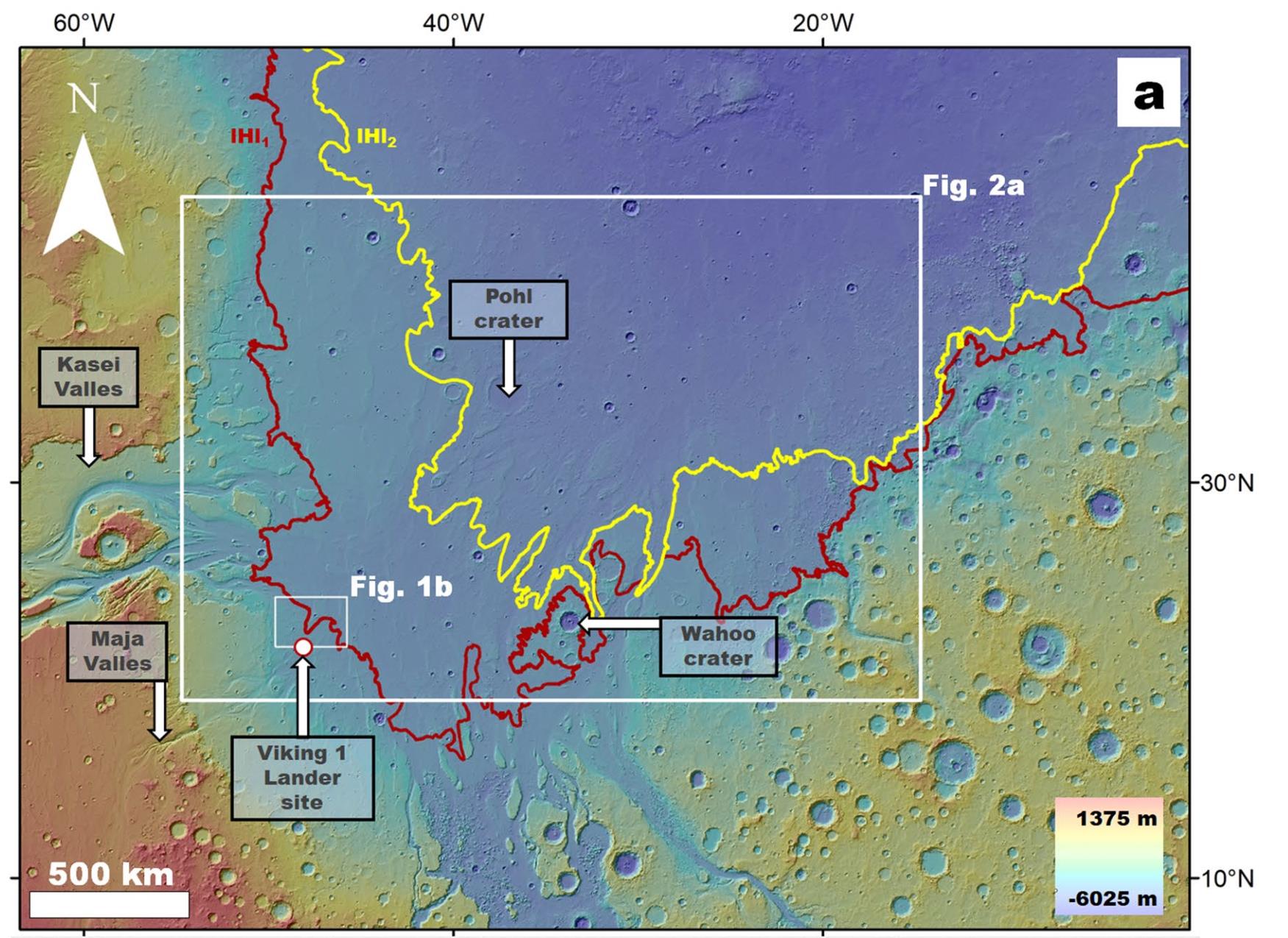
What the study found was that there were multiple models that fit the observed data, dependent on whether the ground strongly or weakly resisted the impact that occurred. In both cases, the impact would have occurred about 3.4 billion years ago: before Mars lost its oceans, but after many of the ancient events that led to a megaflood-generated ocean. In both instances, an asteroid would be the culprit, with the size of the asteroid varying from 3-to-9 kilometers and the total impact energy varying from 0.5 to 13 million megatons of TNT equivalent.
What was remarkable about these simulations — at least to me, as a scientist looking on who doesn’t specialize in this area — is that they both indicated a remarkable, fast-propagating tsunami would have formed: unlike any other in scope or scale ever considered on the Martian surface. As you can see from the graphs below, the wave would have reached a maximum height of between 400 and 500 meters (more than a quarter of a mile) above sea level, including rising more than 200 meters above normal onto dry land. In just hours, the Viking 1 landing site would have been submerged, and elsewhere, the megatsunami would have reached over 1500 kilometers from the impact site.
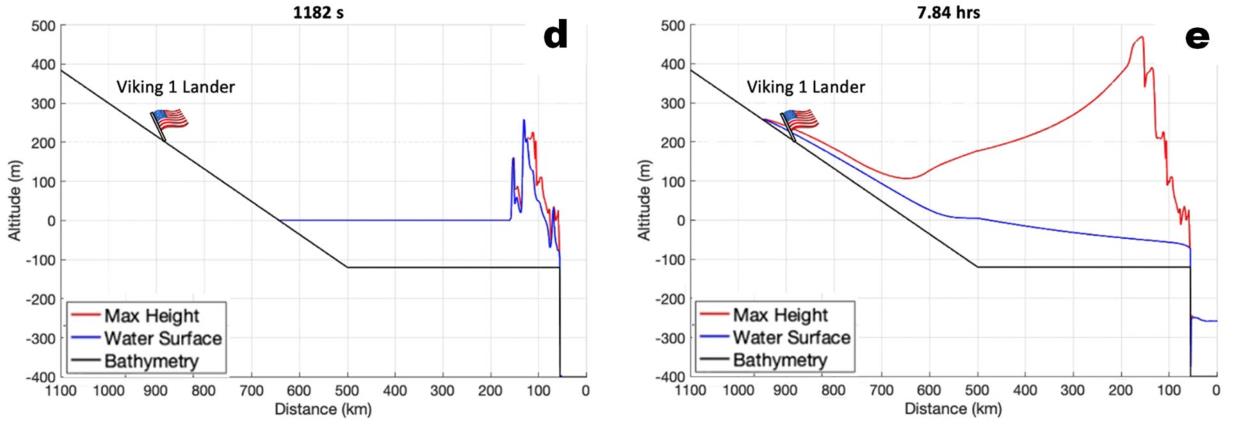
This leads to a remarkable story for how the Viking 1 lander site came to possess the features it now has. First, Mars flooded, creating the ocean that covered the low-lying northern hemisphere of the planet. Second, an energetic impact between an asteroid and Mars occurred, creating both ejecta and a tsunami so large, it’s classified as a megatsunami. Third, the megatsunami carries some of that material up high onto the continental shores, depositing it as it recedes.
Then, a long time passes, and the seas begin to recede: a process known as marine regression. Glaciers form regionally, move, and then melt, leaving a series of younger deposits from the megatsunami across the region rich in ejecta from the original impact. Finally, additional volcanic activity and cratering occurs after Mars loses its surface liquid water, creating the environment we would then come to examine 3.4 billion years later: when Viking 1 landed on Mars. It’s worth noting that the later landing site of the Mars Pathfinder mission — including the famed first Mars rover, Sojourner — lies just outside the suspected deposit region from this megatsunami.
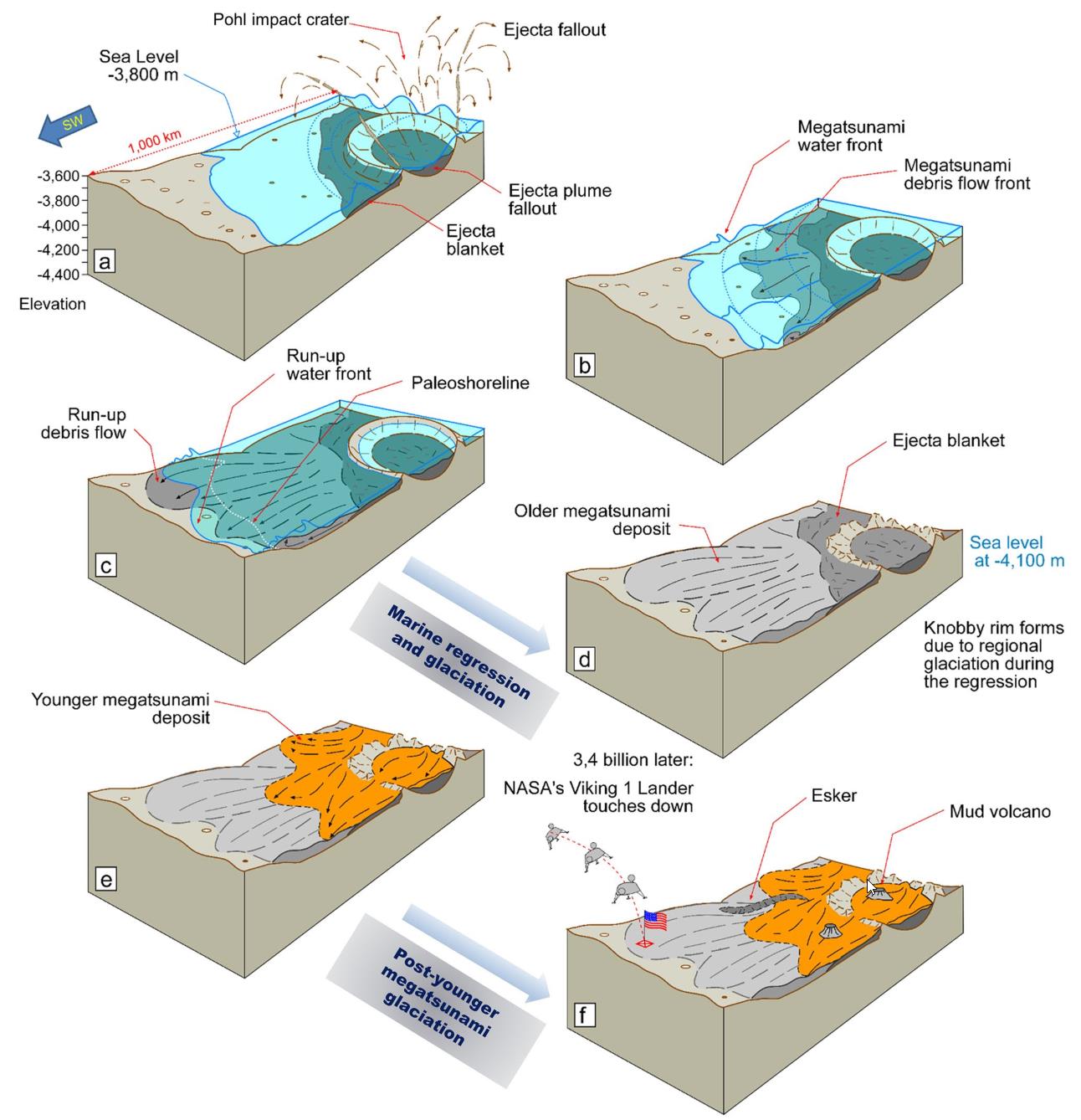
The explanatory power of this impact-and-megatsunami scenario is tremendous. The fact that the region where the Viking 1 lander touched down consists of a poorly sorted, bouldery deposit is highly consistent with being a run-up debris flow, like the kind that would be deposited by a megatsunami. The same physics of megatsunami depositing is at play in well-understood phenomena on Earth, like sediment depositing in breaking waves and normal, run-of-the-mill terrestrial tsunamis.
What’s missing, however, is that there were not backwash channels produced in this region, which one might expect from a megatsunami. The authors argue that the farthest extent of the megatsunami coincides with the old outflow channels, which makes the whole endeavor complicated. Furthermore, the megatsunami depths at these far uppermost reaches is generally shallower than 10 meters, with slows that are typically shallow: at only about 0.1 degrees. The resulting backflows, then, would be weak and insufficient to cause the boulder-like deposits to move again. As the authors put it:
“In other words, the run-up and backwash are asymmetric in their corresponding flow speeds and energies available to transport sediment.”
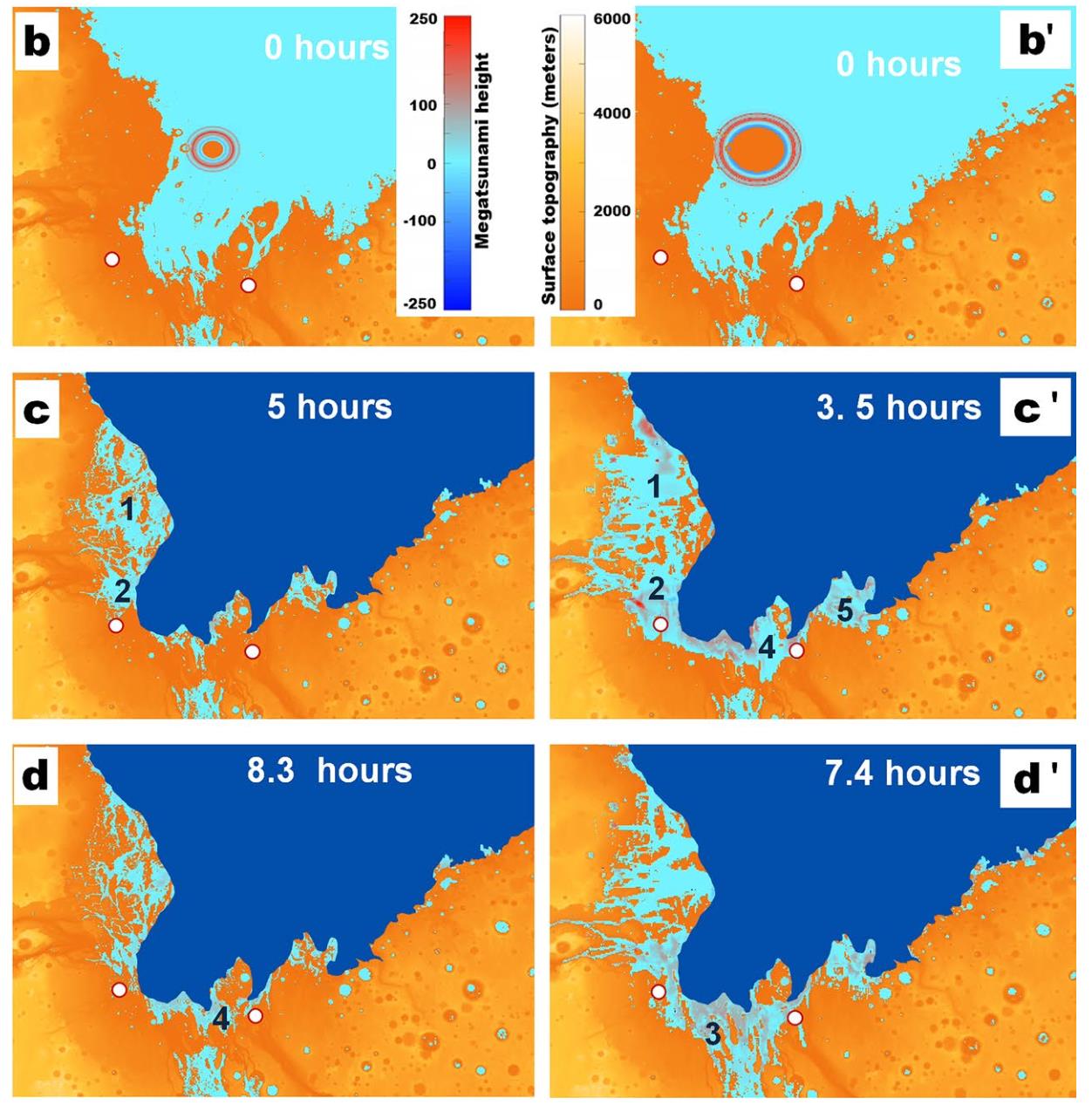
Overall, this is a remarkable idea that may quickly become the new consensus in explaining the features and history that led to the terrain experienced by NASA’s very first Mars lander: Viking 1. This region, so thoroughly examined from orbit and up close, may represent the only catastrophic flood region that was on the border of the ocean that still persisted on Mars this late in the game: more than 1 billion years after the planet formed. Most importantly, the newly identified and named Pohl crater may provide evidence for the first Chicxulub-like impact ever discovered on a planet other than Earth.
We’ve known for a very long time that the Solar System is a violent place, with icy and rocky and even metallic bodies whizzing through it, capable of dinging, denting, or even demolishing significant portions of a planet’s surface. For the first time, the puzzle pieces are seen to fit together so well that we’ve reconstructed an ancient impact on Mars: one that created a megatsunami and — if Mars possessed life on its surface at the time — may very well have triggered a mass extinction 3.4 billion years ago. Despite its small size and its low surface gravity compared to Earth, Mars was still a vulnerable target for these objects. At long last, questions posed by our first lander on Mars might finally have an answer.
